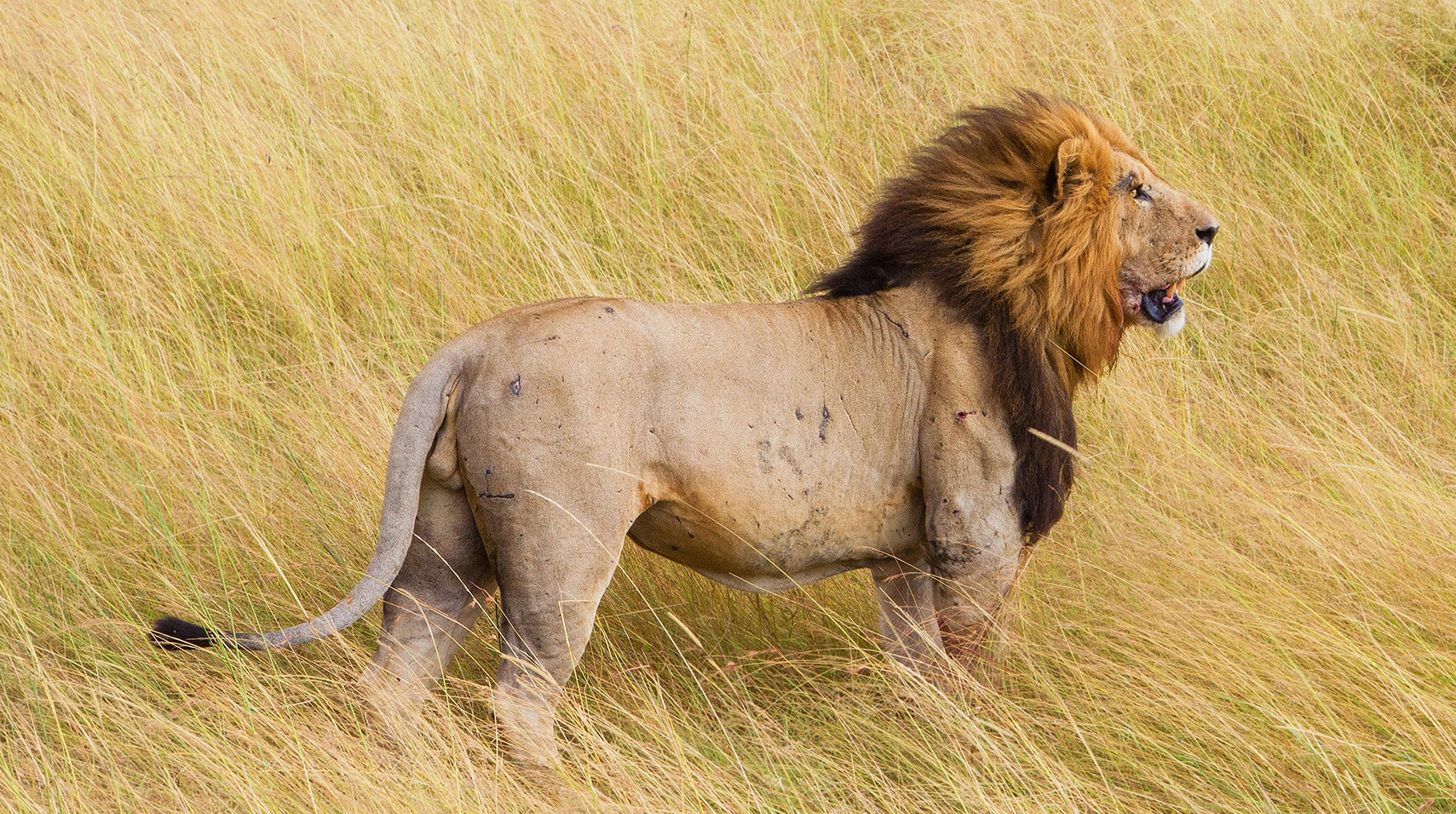
Bestiaries were traditionally works of observation and natural history. Ancient and widespread, their way of observing allowed room for elements of theology, symbolism, and moralizing that strike our modern ear as wildly unscientific. The animals in these old works were not seen in isolation, but in relation to the human sphere. They carried messages and lessons, and had a rightful place in a greater order.
Our own day has brought more detailed facts about animals and a less secure context for the new information. As we learn more about them, can the animals still teach us? We asked our contributors to listen to an animal which has always interested them. Their responses testify to the many levels of relationship which still endure. For the rest of the essays, click here.
–The Editors
To look at a lion is to become aware of the implacable intelligence revealed by his form. The soul of the lion looks out at us from his great, deep face. We see there both kinship and otherness. We see the lion’s killing power, the self-contained lawful violence of his nature, not evil, not good.
The truth the lion embodies is the symmetry of violence, beauty, and order. It is not our truth, yet humans and lions are bound by an order that includes us both. We ask, as of Blake’s tiger, “Did he who made the Lamb make thee?”
Our arising and existence is sustained by the love of God, the same love that holds the lion and tiger and shark in being. “Did he smile his works to see? Did he who made the Lamb make thee?”
Like a king, the lion evokes fear and awe. Five hundred pounds of graceful and magnanimous ferocity, of relaxed and radiant power, he is master of the realm, with no enemies but us. The lion is totally self-contained, his bearing noble, his gaze steady, the glint of his eye hinting at a vast fiery inner power, banked but ever available. As the supreme animal of the sun he is linked to the heart, the center and “sun” of the body.
I have never gone to a zoo without an uncomfortable feeling of moral ambiguity, whether it is a zoo with bars or one in the more modern, “humanitarian” style. I am convinced that the lion in his soul knows it is not right, even if he was born in captivity and knows nothing else. But even behind bars the lion is capable of revealing who he is.
I once witnessed such a moment. It was in a small, old-fashioned zoo, indoors, all cages and chains. The room was dark and shadowy. An indescribable odor of cat musk, dung and urine commingled with that of sweat, popcorn, cotton candy, and soft drinks. The floor was littered with refuse, the hall packed with people. The din was terrific, the scene appalling.
The noise was especially intense around a cage holding several lions, including one large male with a magnificent mane who paced restlessly back and forth in the small space allotted to him. Boys ran up to the cage to roar mockingly or to throw wads of paper between the bars.
Suddenly the male lion stopped pacing, turned away from the people outside as though looking toward his primordial home, and began to roar-a mighty crescendo of roars, one following upon the next. The sound was tremendous, fearsome, the voice of a god. Everyone watched in silence as the great beast stood in his cage, his chest heaving, roar after roar. He stopped as suddenly as he had begun.
I am here, he seemed to say, and I am still a king.♦
From Parabola Volume 8, No. 2, “Animals,”Summer 1983. This issue is available to purchase here. If you have enjoyed this piece, consider subscribing
